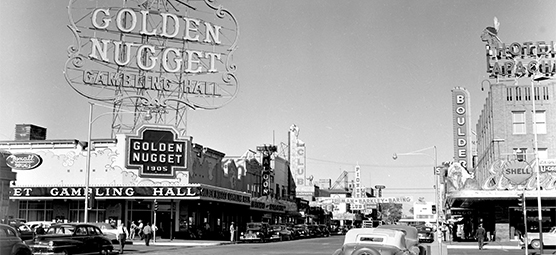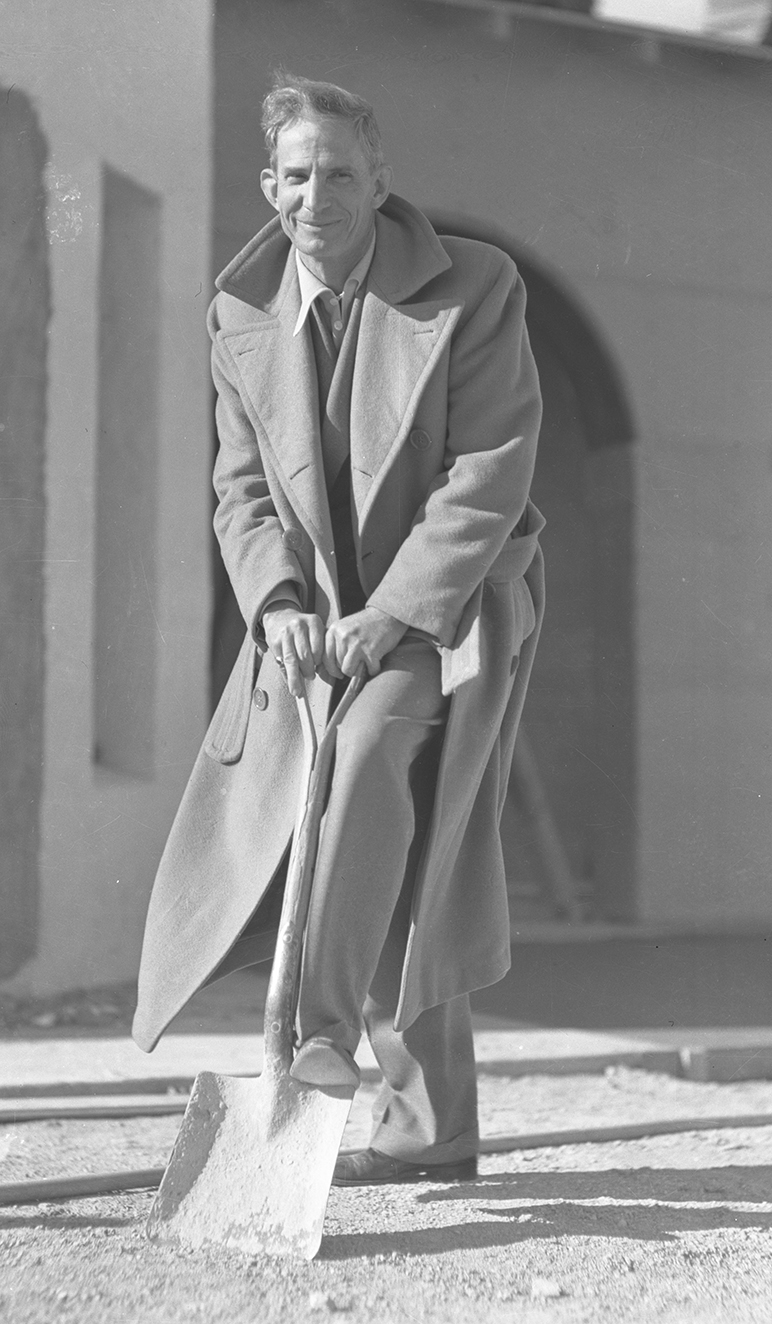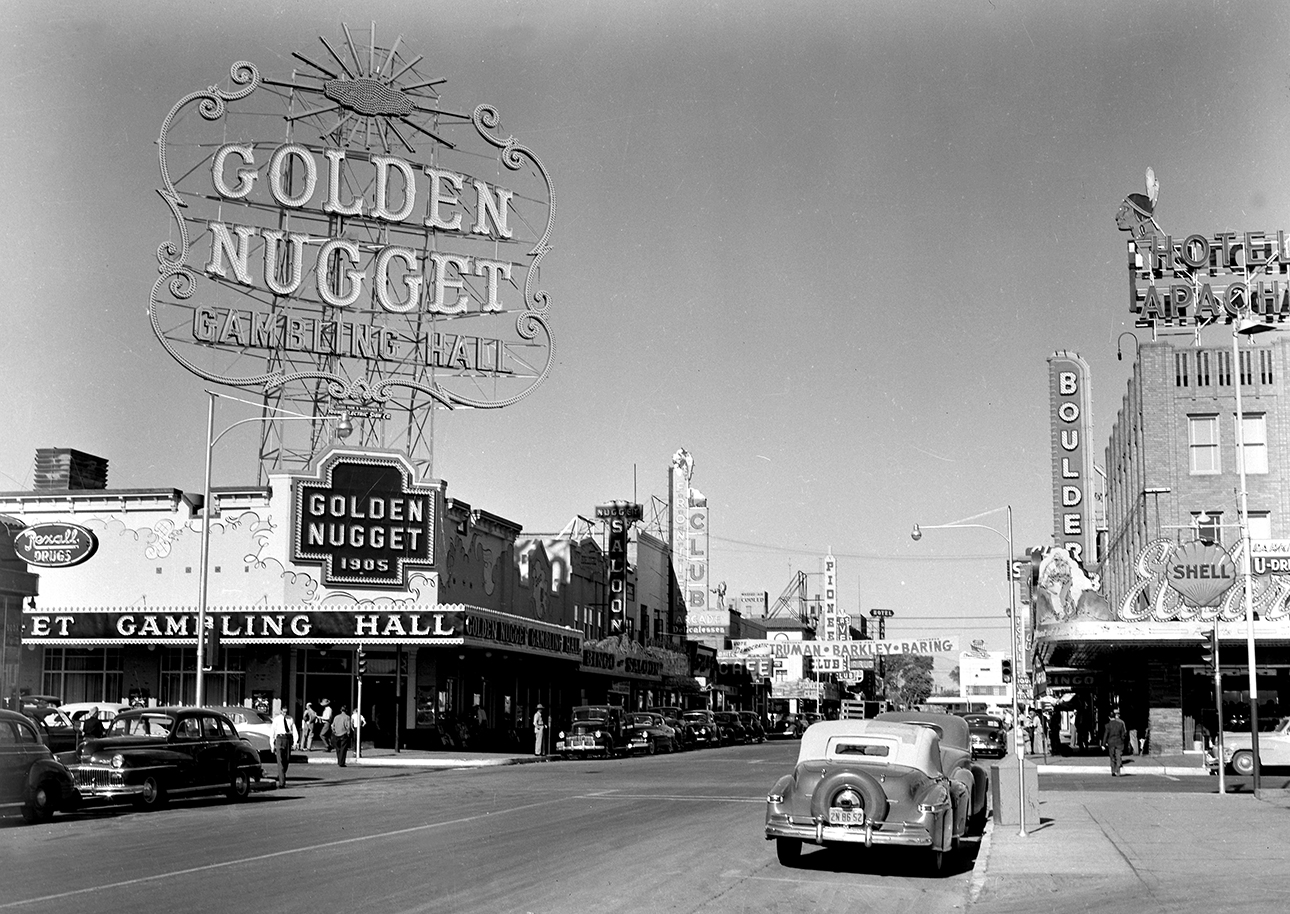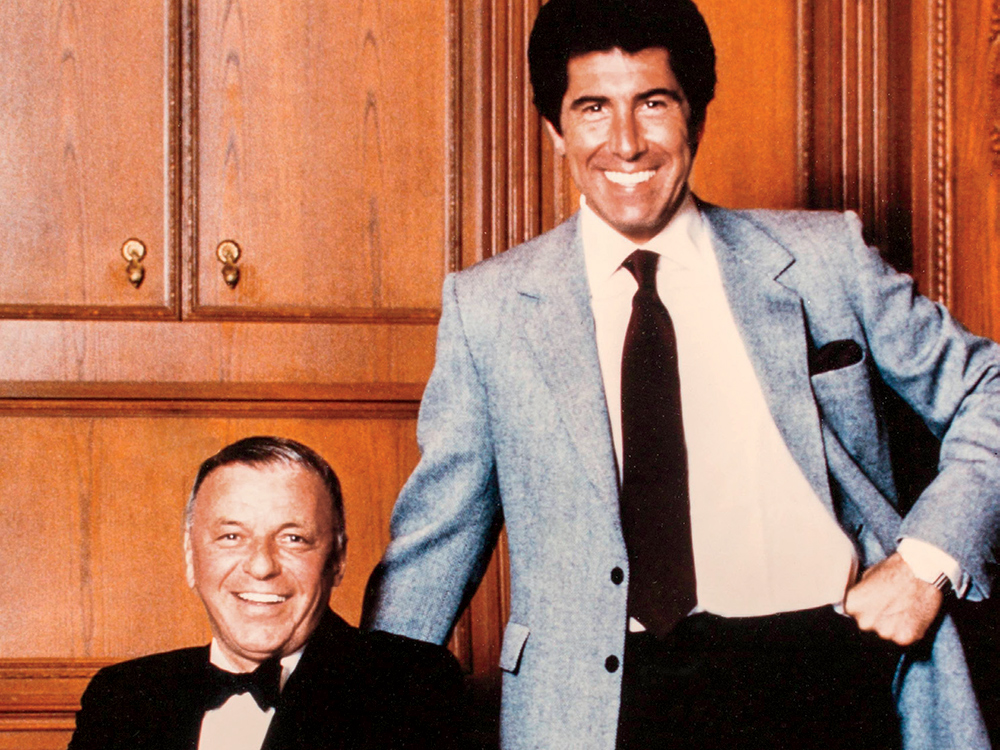Gangster-built Golden Nugget turns 70
Guy McAfee’s downtown casino opened just months before Bugsy Siegel’s Flamingo


By the late summer of 1946, Guy McAfee was the best-known big shot in Las Vegas. McAfee, 58, had spent more than $1 million to open the Golden Nugget casino on August 30. Located on downtown’s Fremont Street, the Golden Nugget was the largest gambling house in town.
Meanwhile, McAfee’s old associates from Los Angeles, Billy Wilkerson and Benjamin “Bugsy” Siegel, were constructing what would become a more famous casino, the Flamingo, several miles to the south on Highway 91 – latest known as the Las Vegas Strip. The Flamingo would debut on December 26.
Few in Las Vegas knew or cared about how McAfee earned his way to Las Vegas from Los Angeles. In the 1930s, he owned the Clover Club, a nightclub and illegal casino on Sunset Boulevard – the “Sunset Strip.” The Clover Club was popular with the Hollywood set.
McAfee’s reputation preceded him in L.A. Born in Kansas in 1888, he joined the Los Angeles Police force in his twenties. In the 1920s during Prohibition, while serving as captain of the vice squad, he took hush payments from bootleggers. After marrying a brothel madam, he quit the force to make more cash as one of the criminals, joining the ranks of Los Angeles’ top crime syndicate.
By 1931, after the death of Mob boss Charles Crawford, McAfee led the syndicate peopled by the likes of City Hall power broker Kent Kane Parrot, bookmaker Ezekiel Caress, nightclub manager Milton “Farmer” Page, slot and pinball machine runner Robert Gans, and gambling ship operator Tony Cornero. For years, along with gambling, McAfee had his hands in the city’s brothel racket.
Things were fine for the syndicate until 1938, when city voters overwhelmingly recalled syndicate-friendly Mayor Frank Shaw and voted in Superior Court Judge Fletcher Bowron as a reform mayor to put a stop to the pervasive vice rackets. McAfee soon left town for Vegas with his wife, the sexy movie actress June Brewster (they would divorce in 1941). In 1939, he bought the small Pair-O-Dice casino and auto park on Highway 91 outside Las Vegas. His wife June recalled years later that he jokingly called the almost-barren highway the “Strip,” after the Sunset Strip, believing, correctly, that other casinos eventually would locate there.
But he also invested in downtown, buying a two-story building on Fremont Street. In 1941 he sold the 91 Club and purchased, on Fremont, the Pioneer casino as well as Cornero’s SS Rex Club casino, and built a modern, tropical-themed bar, the Mandalay Room.

By 1945, with the El Rancho and Last Frontier (at the site of the former Pair-O-Dice) hotel-casinos operating along the highway, McAfee announced he was ready to build his dream property, along with investor Buck Blaine. He called it the Golden Nugget Saloon, located at Fremont and First streets, the site of a pool hall, café and former drugstore. For its interior, McAfee demanded fixtures 50 years or older, opting for Victorian carved wood and marble imported from Italy to fashion a decor based on the original Golden Nugget bar in San Francisco’s Barbary Coast during the Comstock silver rush of the mid-19th century.
About 20,000 people were invited to the grand opening. He touted the place, beyond Las Vegas, as “the largest casino in the world.” He permitted the Nugget’s poker dealers to deal no-limit games to gamblers until 1950. The gaming hall boasted of the largest – and brightest – sign in the world, when it erected its new neon sign, topped with a shining neon nugget, over Fremont Street in 1949.
In the early ’50s, McAfee converted the Golden Nugget into a public corporation, with himself as president, With his partners Jake Kozloff and Beldon Katelman, he bought the Frontier Hotel for $5.5 million. In 1960, McAfee retired and had Blaine become company president. McAfee died at a Las Vegas hospital later that year.

In the 1950s and ’60, the resorts on the Las Vegas Strip, the name coined by McAfee, easily surpassed downtown in popularity with tourists. But in 1972, Steve Wynn, a local real estate investor and former slot supervisor at the Frontier, bought a controlling stake in the Golden Nugget. Two years later, Wynn, now a company board member and its executive vice president, started a $2 million renovation, and in 1977 opened the casino’s first hotel tower.
That year, the new hotel was the first resort awarded a four-diamond rating by the Mobile Travel Guide. Wynn in 1982 announced another renovation and convinced famed singer Frank Sinatra, known for his performances at major Strip hotels, to perform downtown at the Golden Nugget. In 1984, Sinatra and country singer Willie Nelson starred in the hotel’s new Theater Ballroom. The hotel also opened its Spa Tower, where each room is a suite. Wynn appeared with Sinatra in nationally televised commercials for the casino. In 1989, the hotel’s south tower opened.
Wynn’s involvement with the Golden Nugget ended in 2000 after Kirk Kerkorian’s MGM Grand bought it along with Wynn’s other Mirage Resorts casinos. It changed hands again in 2003, when the Poster Financial Group acquired the property, and in 2005, when the restaurant chain Landry’s Inc. took over, renovated the place twice, added 500 hotel rooms and a $30 million, three-story poolside attraction called the Tank, with a 200,000-gallon aquarium and 300 animals, including five species of shark.
Feedback or questions? Email blog@themobmuseum.org





